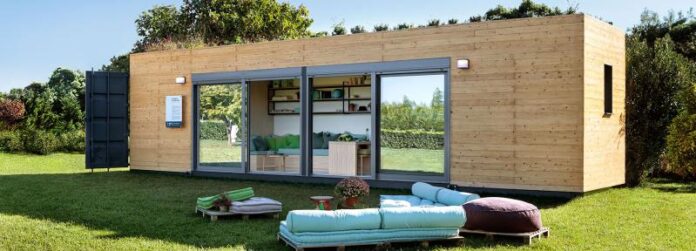The concept of container homes has emerged as a revolutionary housing solution, marrying sustainability with innovation. In recent years, the global container homes market has garnered attention, and research conducted by HTF MI outlines a fascinating trajectory for this burgeoning industry. With a projected growth from $65 billion in 2024 to $120 billion by 2032, the container homes market is expected to expand at a robust compound annual growth rate (CAGR) of 8% during this period. This article delves into the fundamentals of container homes, their market dynamics, benefits, challenges, and future potential.
What Are Container Homes?
Container homes are sustainable living spaces constructed from repurposed shipping containers. These structures have gained popularity due to their versatility, rapid construction timelines, and eco-friendliness. They can be tailored into various forms, including:
- Prefabricated Units: These are mass-produced and shipped ready for quick assembly on-site.
- Modular Homes: Comprising several interconnected containers, they allow for expansive living spaces.
- Customized Designs: Homeowners can customize interiors and exteriors according to their preferences.
- Recycled Containers: These utilize older shipping containers that would otherwise contribute to waste.
In addition to their residential use, container homes are also deployed for commercial purposes, emergency housing, and even hospitality venues.
Market Overview and Key Players
The container homes market is gaining traction not only due to rising housing demands but also due to an increasing focus on sustainable living. Key players leading the charge in this field include:
- SG Blocks
- Giant Containers
- Container Homes USA
- Honomobo
- Falcon Structures
These companies are innovating and streamlining container home designs, making them more appealing to discerning buyers.
Geographic Insights
Geographically, North America is currently the dominant region in container home deployments, owing to increased awareness of eco-friendly building solutions and urban development challenges. However, the Asia-Pacific region is recognized as the fastest-growing area for container homes, largely attributed to urbanization and the need for affordable housing solutions.
Life Cycle and Sustainability
Container homes epitomize sustainability. By recycling shipping containers, they minimize construction waste and utilize readily available materials. Their designs often incorporate energy-efficient features such as solar panels and advanced insulation materials that significantly reduce energy costs. Additionally, container homes can be mobilized and relocated as needed, making them an ideal choice for anyone prioritizing sustainability and flexibility.
Trends Impacting the Container Homes Market
-
Luxury Designs: Although initially viewed as basic structures, modern container homes now include luxury features, enhancing their appeal to high-end markets.
-
Smart Technology Integration: Home automation, security systems, and energy management technologies are becoming standard in new container home models.
- Focus on Emergency Housing: As natural disasters become more common, container homes are being proposed as rapid-response solutions for displaced individuals and communities.
Challenges and Considerations
Despite the exciting prospects, the container homes market faces several challenges:
-
Regulatory Restrictions: Many regions have stringent building codes that can complicate the deployment of container homes.
-
Public Awareness: While awareness is growing, many potential buyers remain unaware of the benefits of container homes.
- Durability Concerns: Ensuring that container homes can withstand various weather conditions remains a crucial concern for manufacturers and consumers alike.
Conclusion
The container homes market represents a dynamic sector with promising growth potential driven by innovation and sustainability. As urbanization accelerates and the demand for housing continues to rise, container homes may become a staple of modern living. Industry players are actively navigating the challenges while capitalizing on trends to offer solutions that cater to diverse demographic needs.
As research from HTF MI suggests, the future of container homes is bright, promising not only to revolutionize the housing market but also to pave the way for a more sustainable planet.
For those interested in getting involved or learning more, industry reports and consultations are available, enabling informed decision-making and strategic planning. The appeal of container homes extends far beyond their unique aesthetics; they embody a forward-thinking approach to housing that meets the challenges of today while preparing for the future.














